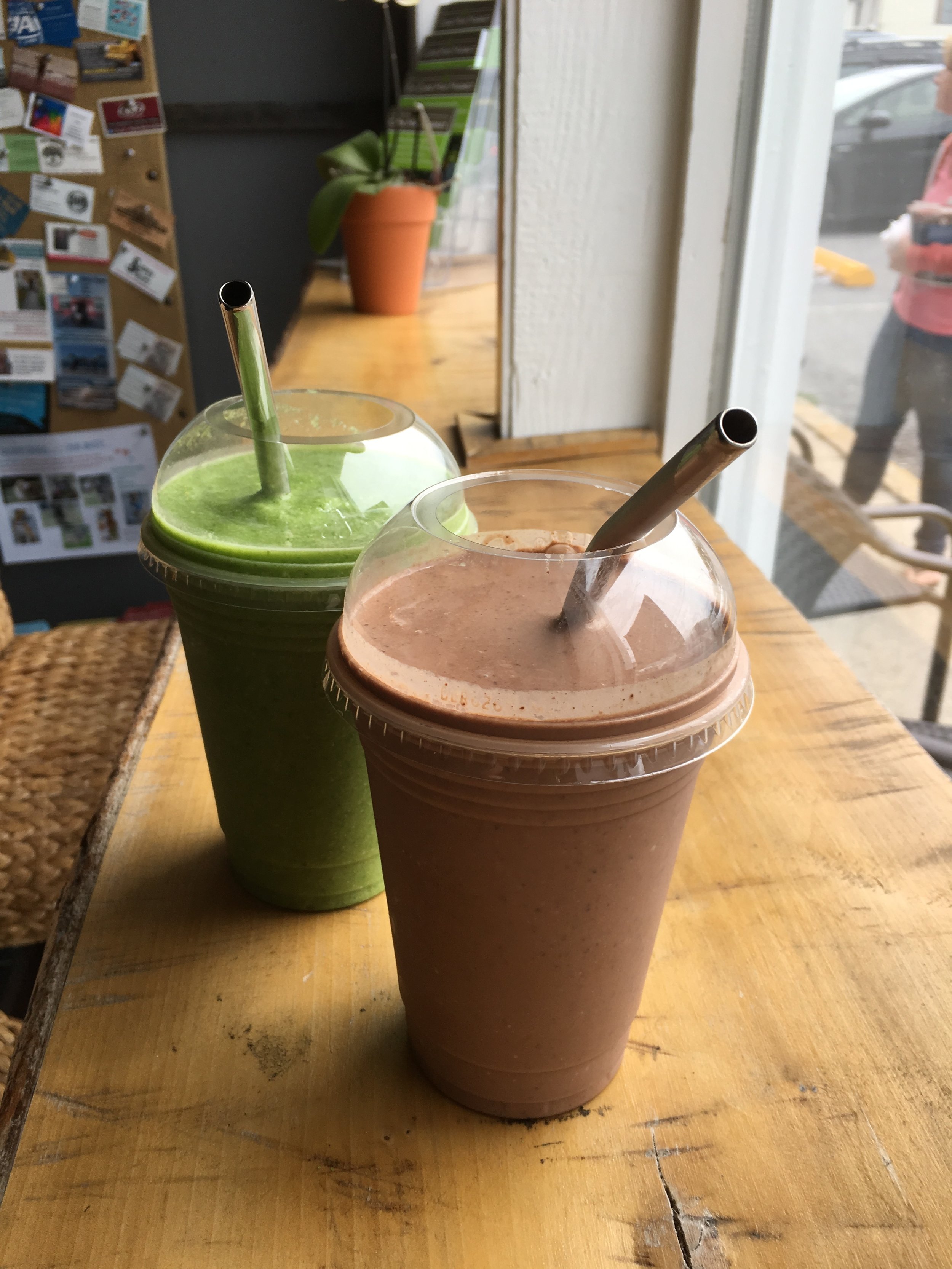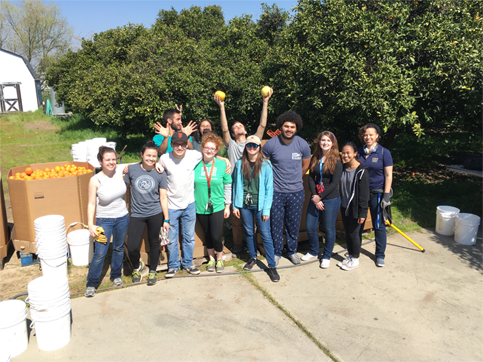It has been one week since I started my waste-less journey and I will be adding an additional type of waste to the challenge on Wednesdays! One week ago, I started my training to be a “zero-waste warrior” focusing on eliminating the use of plastic straws. With my metal straw in tow, I set out to share the work of FRN and zero -waste food systems. Any time that I used a disposable straw, I had to pay $1.00 into my FRN jar. As of yesterday, the jar has $3.00 in it and I have some experience combatting disposable straws. Here are my lessons learned:
On the road last week with my straw and even brought one for my friend
Courtesy of facebook memories, here I am (on the left) enjoying a wine slushie with my best friend. The picture from 2 years ago made me smile this morning. Except… now I see the glaring yellow straws! Cringe! My goal is that two years from now, you can’t spot a disposable item in my happy moments.
1. People have not always used straws -- this I know-- but I like using a straw. One friend asked me why I did not give up the habit all together but as I making less waste challenges that suit my lifestyle (and hope you will do the same), I am keeping the straw habit. I don’t like ice clinking onto my teeth nor do I want to risk a $8.00 organic green smoothie dumping all over me as I try to shake the slushy consistency out of the cup. I tend to use the straw with colder drinks so perhaps the winter will be a better time to re-evaluate the straw habit. But it is hot here in DC and I want a cool drink.
2. Yes, yes--- I hear your thoughts. But what about the disposable cup that you are using? I am getting there but in order to make lasting change, habit gurus suggest small, consistent change. Trust me, the disposable cups/bowls/utensils are in their last days. You can donate $15.00 to FRN now and I will add another type of waste to my challenge and you can see me address disposables faster.
3. Like all warriors-- I must be prepared. I think the biggest lesson learned this week is that I have to think about bringing the straw with me. Two of the three dollars in the jar ended up there simply because I forgot to put the straws in my bag. And as you join me in your journey, a waste warrior also thinks about how to deal with the straw once it is used. Admittedly, I did not think it through and kind-hearted baristas rinsed the straw for me and lent me wax paper so I could put it in my purse as I didn’t want to put it wet in my bag. Obviously, drying the straw with a paper towel isn’t ideal. I purchased bent metal straws but if you buy a straight one, it seems like it would fit into a travel toothbrush holder and solve this problem! I will let you know once I test it out.
Next up: This week I am going to say no to napkins and coasters I noticed during the straw week that little cocktail napkins or coaster usually accompany a drink and I started proactively saying no-thank you. I will add all other napkins to the challenge. Follow me on instagram at @zamaka7 and through the FRN facebook community.














